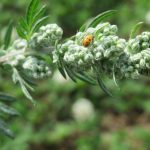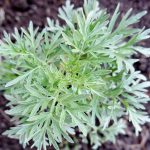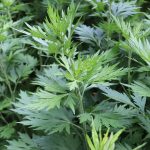Mugwort
Identification:
One of the most striking characteristics of mugwort is the silvery appearance of its lower leaf surface from tiny, densely-packed, wooly hairs. The leaves are arranged alternately on the stem and shallowly lobed closer to the ground but are deeply dissected and linear higher up with each lobe tapered to a point. They bloom from July to October with relatively inconspicuous flowers compared to many of its relatives in the chrysanthemum family. Flowers are borne in clusters and are yellowish green in color, lacking petals. Mugwort seeds are not considered to be viable. Mugwort emerges in the spring and flowers in the late summer and early fall. A single mugwort plant can produce up to 200,000 seeds however, seed dispersal isn’t considered the main contributor to spread. Mugwort generally spreads through the expansion of its shallow root system and branching rhizomes.
The volatile chemicals present in mugwort have a wide range of attributes ranging from their ability to repel certain insects to adversely affect the growth of other plants (allelopathy).
Control:
Mechanical removal is often time-consuming and rather ineffective; studies have shown that rhizomes regenerated even after two years of routine mowing. Integrating the application of a systemic herbicide along with mechanical methods is known to be effective.



